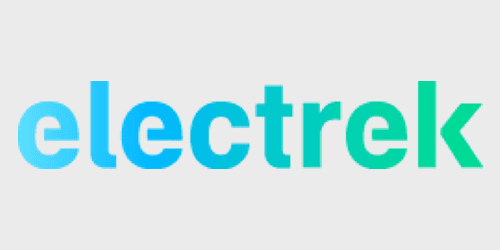
The Solar Energy Industries Association (SEIA), the nonprofit trade association of the US solar industry, just flagged a proposed change to the 2024 International Building Code by the Federal Emergency Management Agency (FEMA) that would do more harm than good to the US solar industry.
November 11: Good news! US solar just averted a major crisis.
The International Code Council’s members – that’s who sets US building codes – have approved two compromise proposals that designate solar and storage projects as Risk Category 2 infrastructure, rather than Risk Category 4, which is typically reserved for emergency services buildings and structures and would have made solar growth prohibitive.
SEIA president and CEO Abigail Ross Hopper said:
We are grateful to the ICC voters for recognizing how impractical it was to include solar and storage projects as Risk Category 4. This decision is undoubtedly a victory for clean energy deployment in the United States after more than 300 companies signed a letter urging approval of SEIA’s compromise proposals.
The extreme and overly burdensome code measures that would have been required under the FEMA proposal could have stifled clean energy growth without improving grid resilience. The resulting effect, whether intended or not, would have been a disastrous decrease in renewable energy projects while we aggressively strive to meet important climate goals.
Bureacratic overreach on solar
Abigail Ross Hopper, president and CEO of the SEIA, published a blog yesterday that draws attention to the potential damage this misguided code change would inflict on solar, battery storage, and wind. She writes:
This misguided proposal by FEMA would raise the structural “risk category” for ground-mounted solar installations, energy storage systems, and wind turbines to the highest level possible, on par with requirements for hospitals and fire stations.
Ross Hopper argues that the current codes ain’t broke, so don’t fix them:
This is a gross overreach. There is no extended record of irreparable damage to solar arrays from higher seismic, wind or snow loads, and there is no justification for these overly burdensome codes.
There are already strict requirements in place that make solar panels sufficiently resilient against high winds and snow loads. Ross Hopper cites the resilience of Florida’s Babcock Ranch development, a “solar-powered town” 12 miles outside of Fort Myers that kept its power, internet, and water supply despite the devastating Hurricane Ian passing over it. CNN writes:
“We have proof of the case now because [the hurricane] came right over us,” Nancy Chorpenning, a 68-year-old Babcock Ranch resident, told CNN. “We have water, electricity, internet — and we may be the only people in Southwest Florida who are that fortunate.”
The proposed code changes would result in unnecessary increased costs for solar projects, as developers would need to procure more materials such as steel, concrete, and higher rated solar PV modules to comply with stricter new requirements. The SEIA fears that this would make solar growth cost prohibitive:
This much is certain: The proposed code change is unworkable. In its current form, S76-22 would cause a drastic spike in construction costs, forcing the cancellation of dozens of gigawatts of clean energy projects that support thousands of jobs and that the United States is relying on to boost grid resiliency.
As for wind power, the SEIA points out in its fact sheet that S76-22’s “unneeded load increases constrain the size & height of wind turbines, reducing power output.”
Proponents of S76-22 believe that applying higher seismic, wind, and snow loads to structural calculations would lead to greater grid reliability.
But grid reliability is under the scope of influence of the North American Electric Reliability Corporation (NERC) and the Federal Energy Regulatory Commission (FERC), and the SEIA says those two agencies weren’t even consulted about FEMA’s code change proposals.
So, the SEIA has opted for political diplomacy: It’s calling for compromise solutions that would allow solar projects to be designated as Risk Category 2:
While it still increases the structural requirements for solar facilities, this framework takes a reasonable approach and will help ensure more projects get built.
Electrek’s Take
I met up with a solar industry executive on September 8 for coffee here in Vermont. They were headed to FERC’s “New England Winter Gas-Electric Forum” in Burlington and said that no clean energy industry representatives were included on the panel.
I found that extremely surprising, seeing how the Biden administration is pushing hard for the move to electrification, and FERC is a federal government agency. The executive explained that government agencies can sometimes lag behind in getting on the bandwagon on newly implemented initiatives such as the Inflation Reduction Act.
That situation seems to be the case here with the stricter FEMA building code proposal. It falls into the “well intended, poorly executed” category, and SEIA is right: It needs to either be amended or scrapped. The United States can’t afford to lose momentum under any circumstances in its move to clean energy.
Read more: This modular off-grid solar EV charger can be installed in just four hours
Photo: US Secretary of Labor Marty Walsh at First Solar
UnderstandSolar is a free service that links you to top-rated solar installers in your region for personalized solar estimates. Tesla now offers price matching, so it’s important to shop for the best quotes. Click here to learn more and get your quotes. — *ad.
FTC: We use income earning auto affiliate links. More.




Comments